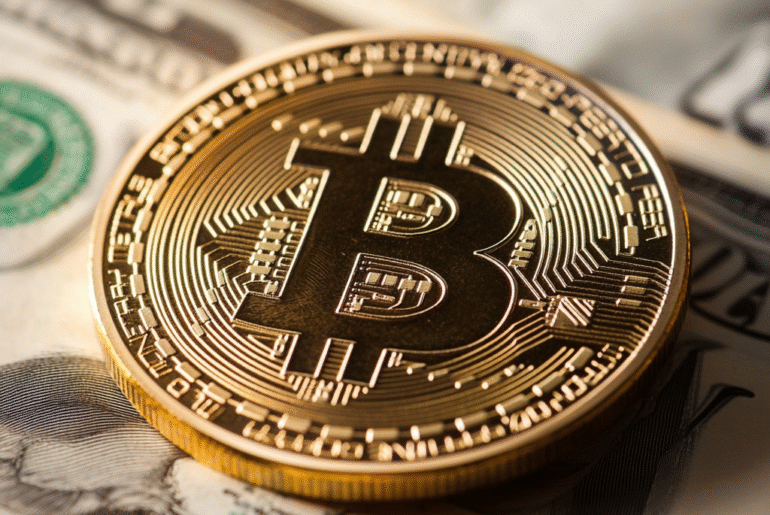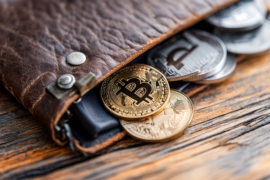This article may contain references to products or services from one or more of our advertisers or partners. We may receive compensation when you click on links to those products or services. Nonetheless, our opinions are our own.
The information presented in this article is accurate to the best of our knowledge at the time of publication. However, information is subject to change, and no guarantees are made about the continued accuracy or completeness of this content after its publication date.
Digital finance is changing faster than ever, changing how investors think about making money, protecting it, and spreading it out. Bitcoin, a decentralized digital asset that promises high returns but is very volatile, is leading the way as cryptocurrencies go from being a niche interest to a mainstream one. At the same time, government bonds still give investors stability and predictable returns, which is an important part of managing risk. Stablecoins, on the other hand, have become a strong link between traditional finance and crypto, providing stability and digital efficiency.
To have a balanced portfolio, you need to know how Bitcoin, treasuries, and stablecoins work together. We’ll talk about each asset class in great detail, compare their performance, and give you useful advice on how to include them in a solid investment plan.
- Fundamentals and Investment Insights of Bitcoin
- Cornerstones of Portfolio Stability
- Stablecoins: Bridging Traditional Finance and Cryptocurrency
- Balancing Crypto and Traditional Investments
- Future Trends in Digital Finance
- Conclusion: Building a Resilient Investment Strategy
- Frequently Asked Questions
- Recommended Reads
Fundamentals and Investment Insights of Bitcoin
Bitcoin is the most recognized cryptocurrency, operating on a decentralized blockchain network that allows peer-to-peer transactions without intermediaries. As a digital store of value, it appeals to those seeking alternatives to fiat currencies and conventional financial systems.
Considerations for Bitcoin Investments
- Market Volatility: Bitcoin’s price can swing dramatically within hours or days, requiring strong risk tolerance.
- Research: Staying informed about market trends, blockchain upgrades, and regulatory changes is essential.
- Security Practices: Utilizing hardware wallets, secure passwords, and two-factor authentication helps protect investments.
- Diversification: Allocating only a portion of a portfolio to Bitcoin can help balance risk.
Bitcoin vs. Traditional Assets:
| Investment Type | Average Annual Return (%) | Risk Level |
|---|---|---|
| Bitcoin | ~100% (recent 5-year avg) | High |
| U.S. Stocks | ~10% | Medium |
| Treasury Bonds | ~3% | Low |
| Real Estate | ~8% | Medium |
Cornerstones of Portfolio Stability
U.S. Treasury securities remain the gold standard for safety-conscious investors, offering predictable returns backed by the federal government. Including treasuries in a portfolio provides diversification and a buffer against market volatility.
Types of Treasury Securities
- Treasury Bills (T-Bills): Mature in one year or less; do not pay interest but are sold at a discount.
- Treasury Notes (T-Notes): Mature in two to ten years; pay semi-annual interest.
- Treasury Bonds (T-Bonds): Long-term securities with maturities of 20 or 30 years; pay semi-annual interest.
Comparison of Treasury Instruments
| Type | Maturity | Interest Payments |
|---|---|---|
| T-Bills | Up to 1 year | None |
| T-Notes | 2-10 years | Semi-annual |
| T-Bonds | 20-30 years | Semi-annual |
Advantages of Treasuries
- Offer capital preservation.
- Provide predictable income streams.
- Act as a hedge during market downturns.
Stablecoins: Bridging Traditional Finance and Cryptocurrency
Stablecoins are digital assets pegged to stable values, such as the U.S. dollar, minimizing price volatility while maintaining blockchain efficiency. They are increasingly used for trading, payments, and earning passive income through decentralized finance (DeFi) platforms.
Popular Stablecoins
| Stablecoin | Backing Asset | Market Cap (Approx.) | Platform |
|---|---|---|---|
| USDT | U.S. Dollar | $110 Billion | Tether |
| USDC | U.S. Dollar | $65 Billion | Circle |
| DAI | Crypto Collateral | $6 Billion | MakerDAO |
Benefits of Stablecoins
- Risk Mitigation: Protect funds during crypto market volatility.
- Liquidity: Enable rapid transactions between exchanges and wallets.
- Yield Opportunities: Platforms often offer 2–10% annual yields on stablecoin deposits.
Voted "Best Overall Budgeting App" by Forbes and WSJ
Monarch Money helps you budget, track spending, set goals, and plan your financial future—all in one app.
Get 50% OFF your first year with code MONARCHVIP
Balancing Crypto and Traditional Investments
Effective portfolio management requires balancing high-risk, high-reward assets with stable, income-generating investments. This helps protect against downturns and ensures long-term growth.
Strategies for Harmonizing Portfolios
- Diversification: Allocate across various asset classes, including stocks, bonds, cryptocurrencies, and stablecoins.
- Regular Rebalancing: Adjust allocations to maintain alignment with financial goals.
- Goal Setting: Define clear investment objectives, such as retirement savings or short-term liquidity to guide decision-making.
- Continuous Education: Monitor market trends and updates on both traditional and crypto assets.
Example Portfolio Allocation
| Asset Class | Target Allocation (%) |
|---|---|
| Stocks | 40% |
| Treasury Bonds | 25% |
| Bitcoin | 20% |
| Stablecoins | 10% |
| Cash | 5% |
Future Trends in Digital Finance
Digital finance continues to evolve, reshaping investment landscapes and opportunities.
Emerging Trends
- Increased Stablecoin Adoption: Stablecoins are expected to see wider use in cross-border payments and remittances.
- Tokenization of Real-World Assets: Converting physical assets like real estate or treasuries into digital tokens expands accessibility.
- DeFi Integration: Decentralized platforms offering lending, borrowing, and trading services are gaining momentum.
- Regulatory Developments: Governments worldwide are drafting frameworks for digital assets, which could affect adoption and stability.
Recent Market Data
| Year | Stablecoin Market Cap (in $B) | Bitcoin Price (in $) |
|---|---|---|
| 2021 | 25 | 40,000 |
| 2022 | 80 | 20,000 |
| 2023 | 130 | 35,000 |
Conclusion: Building a Resilient Investment Strategy
To be a good modern investor, you need to know how digital assets like Bitcoin, traditional securities like treasuries, and new tools like stablecoins work together in changing financial markets. Bitcoin can give you big returns, but it is also very volatile. Treasuries are a great way to protect your portfolio during market swings because they keep your money safe and provide stable income. Stablecoins are a mix of both types of coins. They offer digital liquidity and price stability.
Investors can make strong plans that fit their own risk tolerance and financial goals by spreading their money across these asset classes, setting clear goals, and keeping up with new trends. Investors can do well in a world where money is becoming more and more interconnected by using both traditional and digital assets.
Frequently Asked Questions
What are the main risks of investing in Bitcoin?
Bitcoin is highly volatile, with rapid price fluctuations that can lead to substantial gains or losses. Other risks include potential regulatory changes, exchange security breaches, and evolving technology.
How can stablecoins benefit an investment portfolio?
Stablecoins offer a hedge against crypto market volatility, enable fast and low-cost transactions, and provide opportunities for earning interest through DeFi platforms.
Why are treasuries important in a diversified portfolio?
Treasuries offer predictable income and low correlation with riskier assets, helping to stabilize portfolios and reduce overall risk exposure.
What is the difference between stablecoins like USDT and DAI?
USDT is pegged directly to the U.S. dollar, backed by fiat reserves, while DAI is backed by overcollateralized crypto assets, making it decentralized but potentially more complex.
How does tokenization of real-world assets work?
Tokenization converts physical assets into digital tokens on a blockchain, allowing fractional ownership, improved liquidity, and easier transfers.
Are stablecoins regulated?
Regulation of stablecoins is increasing globally, with efforts to ensure consumer protection, prevent misuse, and establish transparent practices, which could impact their use and availability.

Reviewed and edited by Albert Fang.
See a typo or want to suggest an edit/revision to the content? Use the contact us form to provide feedback.
At FangWallet, we value editorial integrity and open collaboration in curating quality content for readers to enjoy. Much appreciated for the assist.
Did you like our article and find it insightful? We encourage sharing the article link with family and friends to benefit as well - better yet, sharing on social media. Thank you for the support! 🍉
Article Title: Bitcoin, Treasuries, and Stablecoin Surge
https://fangwallet.com/2025/08/12/bitcoin-treasuries-and-stablecoin-surge/The FangWallet Promise
FangWallet is an editorially independent resource - founded on breaking down challenging financial concepts for anyone to understand since 2014. While we adhere to editorial integrity, note that this post may contain references to products from our partners.
The FangWallet promise is always to have your best interest in mind and be transparent and honest about the financial picture.
Become an Insider

Subscribe to get a free daily budget planner printable to help get your money on track!
Make passive money the right way. No spam.
Editorial Disclaimer: The editorial content on this page is not provided by any of the companies mentioned. The opinions expressed here are the author's alone.
The content of this website is for informational purposes only and does not represent investment advice, or an offer or solicitation to buy or sell any security, investment, or product. Investors are encouraged to do their own due diligence, and, if necessary, consult professional advising before making any investment decisions. Investing involves a high degree of risk, and financial losses may occur including the potential loss of principal.
Source Citation References:
+ Inspo
There are no additional citations or references to note for this article at this time.











































